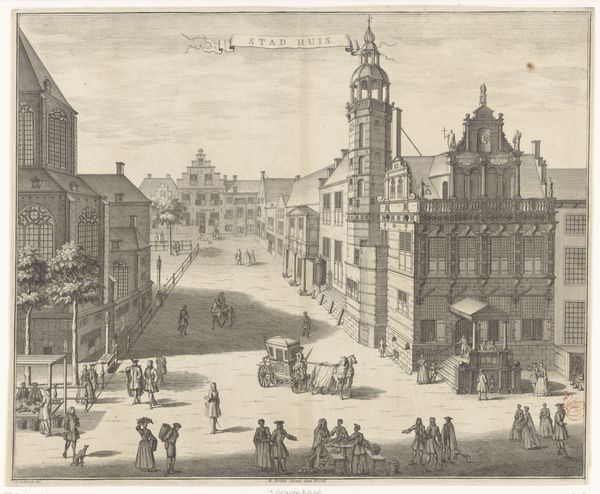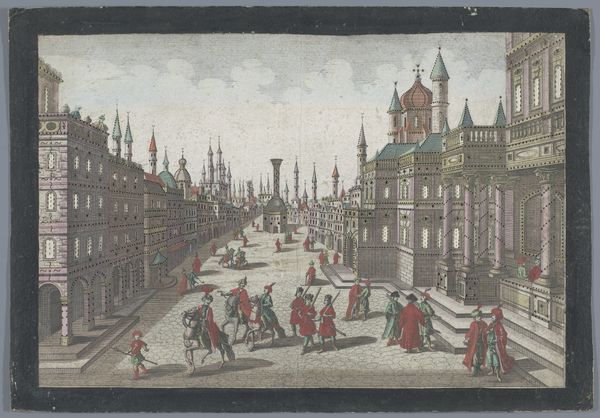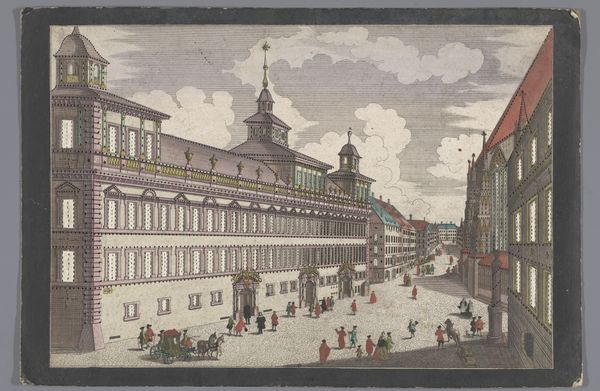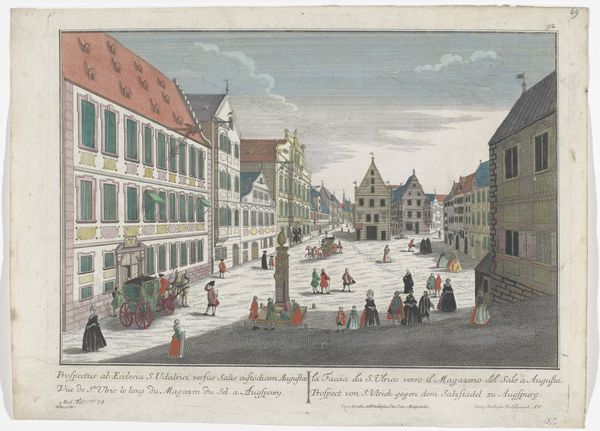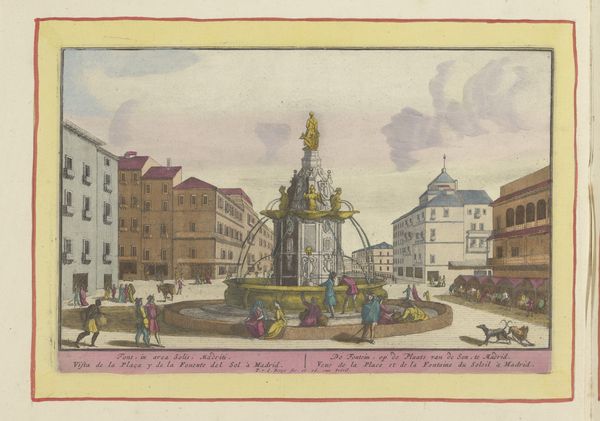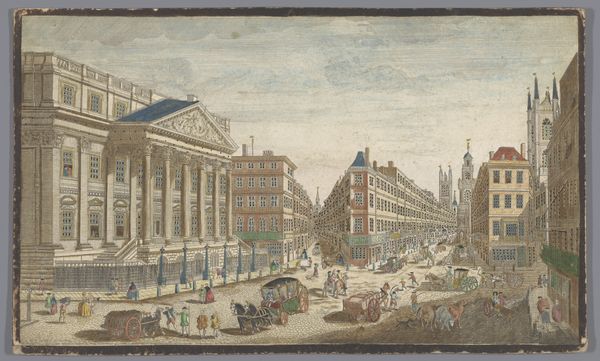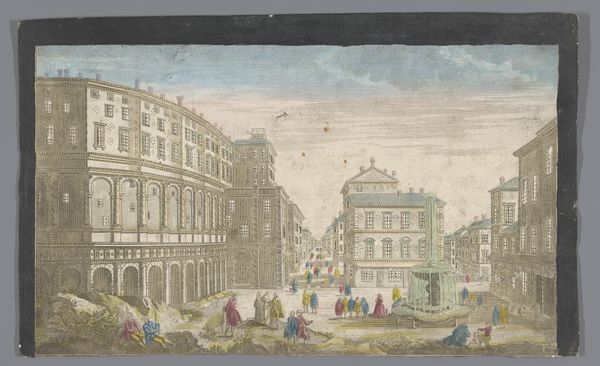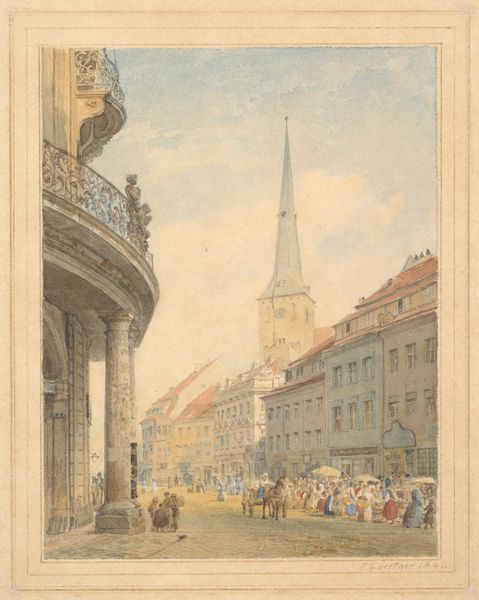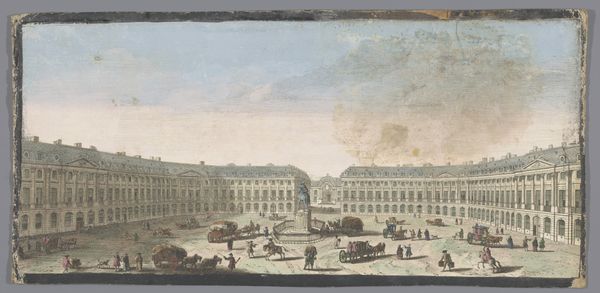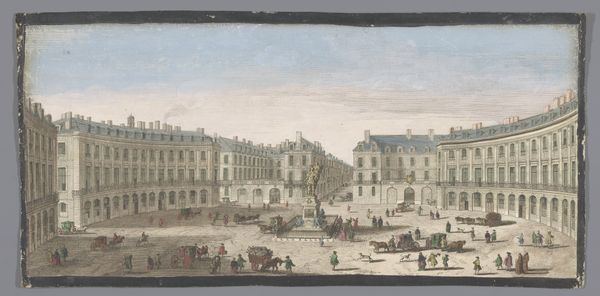
Dimensions: height 307 mm, width 432 mm
Copyright: Rijks Museum: Open Domain
Curator: What strikes you first about this scene? For me, it’s the muted palette—almost ghostly. Editor: Indeed, there's a certain ethereal quality. I suppose the muted colors lend a calmness to what is, in fact, a bustling market scene. It makes me think about civic pride and commerce. Curator: Precisely. We’re looking at “View of the Wine Market in Augsburg” by Georg Balthasar Probst. The work, dating from between 1742 and 1801, is created using a combination of watercolors and mixed media. Editor: The buildings themselves appear incredibly detailed. The artist captured the textures and forms impeccably with very tight, neat brushwork. The precise geometry almost looks like an architect's drawing rather than a painting. The vanishing point is so pronounced, the whole vista pulls the eye in and along the market. I feel that contributes to the feel of an ordered, powerful society. Curator: The perspective absolutely directs our gaze. It creates a theatrical backdrop for the market's activity. The use of watercolor grants a delicate atmospheric feel which juxtaposes interestingly with the very solid and structured architecture that surrounds. There is a rigid architectural structure contrasting with the almost incidental addition of the figures. Editor: It’s certainly intriguing to consider the public’s role in its creation and reception. It clearly depicts civic life during a transformative period, presenting the market as a stage for the rituals of daily commerce. We should recall this area's commercial function throughout the depicted era in understanding the work. Curator: Perhaps these figures aren’t as incidental as I first believed. I think that through colour and form Probst invites the viewer to consider how society is constructed from both a planned structure and more informal public behaviours and practices. It suggests the potential, through repeated viewing, for more considered insights into Augsberg at the time of its creation. Editor: The overall presentation evokes that era’s confidence in city life. The architecture dwarfs all other details, representing power and purpose. It serves to reveal much about how life must have been at that point in time. I found looking at the architecture incredibly telling about the power structures within society. Curator: The contrast is indeed significant, pointing us towards key issues of power and society. And a close consideration of those formal techniques unlocks it all. Editor: Yes, looking back, it's incredible what an analysis of both form and cultural content reveals.
Comments
No comments
Be the first to comment and join the conversation on the ultimate creative platform.


